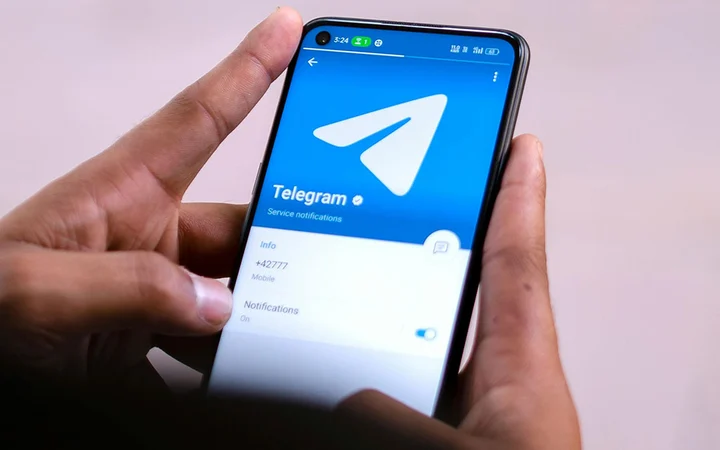Ethereum vs Solana What’s the Meaning of Non-Ethereum L1?
Ethereum vs Solana Decoding the Significance of Non-Ethereum L1Author: Ignas, Source: Author’s blog; Translation: Song Xue, LianGuai
After reading the discussions on X, it seems that many people have missed the fundamental debate behind the Ethereum vs. Solana battle.
The basic discussion here is not just a comparison between Ethereum and Solana, but how we can scale blockchain for mass adoption. Let’s get straight to the conclusion, I believe that nothing is certain yet, and these questions are not as simple as they seem. That’s great, because we still have time!
What is the significance of non-Ethereum L1?
In order to understand the bigger picture of the Ethereum vs. Solana comparison, I want to briefly review other major L1s and their value propositions. It will help us create an L1 map based on scalability solutions.
- Coinbase’s Game-Changing Move An Open Source On-Chain Payments Protocol Offering Merchants Instant Settlement!
- Bithumb’s Ex-Chair Faces 8-Year Jail Term, but He’s Not HODLing Back as Prosecutors File Appeal!
- What are Polygon’s big plans for 2023 after its rebirth?
Recently, I did six AMAs with well-known L1s and zkSync, discussing the role of L1 in the L2 era.
The main question of the discussion was the role of alt-L1 when Ethereum’s L2 can scale Ethereum with fast transactions and lower fees.
Not surprisingly, the most divisive issue was whether Ethereum has already won the L1 game. Sanket from Polygon and Alex from zkSync believe that Ethereum has largely won the L1 game, but the Solana, Avalanche, and BNB Chain teams disagree.
Near’s position is subtle: Ethereum will continue to dominate, but other Layer 1 solutions will thrive in areas where Ethereum isn’t strong. Near’s value proposition is somewhat unclear, but they recently collaborated with Polygon to scale Ethereum on the data availability layer, which aligns with the above views.
Bankless stated in their podcast that Near is migrating to Ethereum Layer 2 solutions, but this is not accurate. Near exists as a whole and also helps Ethereum achieve scalability through Near’s data availability and storage capabilities.
In fact, Near can also provide fast finality for L2, where Arbitrum settles to Near first and then settles to Ethereum, providing both Ethereum + Eigenlayer security guarantees and decentralized sequencer for L2.

Eigenlayer retryers are re-executing transactions to ensure the sequencing is honest.
The core proposition of Avalanche’s modular design is to scale through subnets, where anyone can seamlessly build their own blockchain. Architecturally, Avalanche sits between Cosmos and Polkadot, with the P-Chain (for validation), C-Chain (smart contracts), and X-Asset (for sending and receiving funds). You can learn more about how it works in the AMA I conducted with Luigi, the DeFi/DevRel lead at Avalanche.
The launch of BNB Chain was aimed at addressing the high gas fees of Ethereum. However, even with gas fees below $0.5 (and compromising on decentralization), BSC is still not cheap enough for many use cases like high-frequency trading. To solve this problem, BNB introduces opBNB L2 on BSC and Greenfield for data availability.

Do these scalability solutions sound complex? Welcome to the world of modular blockchains. This is the core of the Ethereum vs Solana debate, which I’m genuinely passionate about.

The assumption here is that a single blockchain needs to compromise among three key aspects of blockchain technology: security, scalability, and decentralization. A blockchain can only have two, and Ethereum focuses on security and decentralization, leading to high gas fees and slow transactions. Therefore, it outsources scalability to execution layers and data availability layers.

However, Solana is ambitious and aims to solve the blockchain trilemma through a single cohesive design. Is it impossible?
Defending Solana
Solana’s vision is to bring together all the advantages, such as cheap and fast transactions. In practice, this eliminates the need for cumbersome bridging, and the cost is only a fraction of what the best L2 solution currently provides.
The experience of $0.69 per transaction on Arbitrum (at the time of writing) is not ideal… We need L3 soon!

Now, all these good things require powerful hardware, making running validators expensive (here’s a calculator). In fact, due to the high development cost, Lido has even withdrawn liquidity stSOL staking.
Furthermore, SOL allocation also faces criticism, with 48% allocated to insiders/venture capitalists. Finally, Solana lacks a second production client (there is only one blockchain software client in Solana, meaning only one program needs to be modified to eliminate ownership).
Due to the above features, the Ethereum community (note that most of my portfolio is in ETH) claims that Solana is not as decentralized as Ethereum. This is a sensitive topic, but my current intermediate thoughts are as follows:
-
Ethereum L2 is not truly decentralized (Sequencer is centralized);
-
Hardware prices are trending downwards, which is beneficial for Solana in the long run;
-
Solana will launch Firedancer, its second decentralized network validator;
-
One could say that the future scalability of Ethereum lies in the hands of venture capitalists funding L2, DA protocols, etc.
In fact, according to the Nakamoto coefficient, Solana scores higher than Ethereum. It signifies how many entities are needed to control 33% of a blockchain’s stakes, reflecting its decentralization and security. Higher scores indicate greater resistance to manipulation. Solana scores 22, while Ethereum scores only 2.

However, decentralization is a spectrum, and if you truly care about decentralization, you should buy and hold Bitcoin. I also see it as insurance against the failure of Ethereum, fiat currencies, or other black swan events.
In practice, I believe self-custody is one of the most important aspects of DeFi. I want to ensure that neither the Solana Foundation nor the government can seize or freeze my funds. In fact, I have more confidence holding SOL on Solana than holding ETH on Coinbase (this is unrelated to price). Unfortunately, the high gas fees on Ethereum are driving people towards L2 solutions that compromise security and decentralization.
BTC on Bitcoin > ETH on Ethereum > SOL on Solana > ETH on Coinbase
Furthermore, discussions regarding decentralization are predominantly led by Western English-speaking nations. However, the success of platforms like Tron and BSC in non-Western countries, and even social networks like Farcaster in the West, demonstrate the need for sufficient decentralization in blockchain use cases. Not everyone can afford an $18 transaction fee, you know? Ethereum and L2 are currently networks for the wealthy. Anyway…
I hope to see a diversification of blockchain use cases.

Although I have more confidence in using DeFi for lending and staking large sums of money or holding expensive NFTs on the Ethereum mainnet, I am happier trading on Solana and using it for small-scale or non-financial transactions.
Solana seems to be very well suited for most GameFi, Metaverse, P2E, derivatives, options, and other dApps. This is precisely why Solana is launching Solana Phone through its dApp store. STEPN is a good example, and I’m eager to see more consumer-oriented applications launch on Solana to validate my Solana thesis.
This is why TVL is not the perfect metric for the Solana ecosystem. Ethereum has the most assets because it is the value storage blockchain. But these assets passively exist in yield-generating smart contracts, while Solana emphasizes the speed of capital circulation – the trading volume per dollar of TVL.
With its high scalability and low transaction fees, Solana is able to achieve fast value movement and capital turnover. This speed of capital flow proves the efficiency and attractiveness of the Solana infrastructure to users and investors. – Michelle, Solana Foundation DeFi BD.
Modular and Integrated Future: Why can’t we have both?
To be fair, Solana is not the only integrated blockchain. NEAR, Algorand (AFAIK) are two other examples, and Fantom is transitioning towards integrated scaling design.

But things get more interesting because NEAR is an integrated and modular blockchain that provides data availability for Ethereum L2. Algorand has Co-chains for private permissioned blockchains.
The above bipolar framework is too simplified, and I recommend paying attention to Justin, who shared good (and usually popular) insights on this issue. He favors implementing sharding or adopting Rollup for scaling.

Taylor Reynolds and others, on the other hand, believe in integrated blockchains as the right answer.

But as you can see, there are multiple scaling solutions, and there is still disagreement within the community about which approach is prevailing. So, my main point is:
There are many ways to scale blockchains, and each method has its pros and cons. However, I am a practical person who wants to maximize my returns by investing in solutions that may dominate and have higher potential for growth in the near future.
Especially in the current environment, the transaction fees on Ethereum during busy periods are frustrating, and the cost of using L2 is not cheap, which negatively impacts user experience. I hope the Ethereum community can abstract and obfuscate the user experience in the near future.
Therefore, I cannot ignore the potential advantage of Solana’s grand vision for scaling through integration. If they succeed in attracting more developers, dApps, and users, the growth opportunities are too significant to be ignored.
If you read my blog, you will know that the ecosystem I focus on has 1) technological innovation; 2) money printing opportunities; 3) captivating storytelling.
Solana meets all three criteria. It offers a unique scaling vision and has successfully attracted a large following of believers and haters. Haters are a useful measure of attention because it indicates that even skeptics care about Solana.
Finally, Solana’s ecosystem has been devastated during the bear market, with even NFT projects like DeGods and yOOts leaving Solana. It’s like a war-torn country that is currently rebuilding. This presents an opportunity because only a handful of dApps can attract 1) attention; 2) funds.
In a world where we constantly argue about Windows vs Mac, Android vs iOS, it’s easy to fall into polarized discussions. But as investors, the question shouldn’t be about choosing one or the other. Instead, we can allocate a portion of our investment portfolio to achieve a comfortable balance, which also includes other L1s.
Personally, I find Solana’s vision compelling enough to warrant some allocation. Taking an extreme stance goes against my belief in maintaining an open mindset and constantly reevaluating my viewpoints as new information emerges.
I also care about practicality and believe in trying out Solana before giving it up solely based on the opinions of those who dislike it.
I am very bullish on Ethereum, as are most people. That’s why I even skipped writing a “Defending Ethereum” blog because Ethereum’s value proposition is strong. But that doesn’t mean I won’t consider investing in other L1 solutions.
We will continue to update Blocking; if you have any questions or suggestions, please contact us!
Was this article helpful?
93 out of 132 found this helpful
Related articles
- Are stablecoins parasites of blockchain? Are they really beneficial to blockchain?
- Regulators Crack the Whip on GS Partners’ Metaverse Crypto Fraud
- Bitget Adds Neutron to Innovation Zone, Changing the Crypto Game
- Let the Ripple Effect Begin XRP Price Prediction Takes a Dive as XRP Falls 20% from Recent Highs – Brace Yourself for These Key Support Levels!
- US Congress Throws a Roundhouse Kick to SEC’s SAB 121 Rules in Latest Memo
- Exclusive Explosive Unveiling! Nerayoff Drops Bombshell with Leaked 2015 Vitalik Buterin Recordings Exposing Ethereum’s Dark Secrets – Unmasking the Truth!
- CoinShares Snags Exclusive Option to Acquire Valkyrie: A Bitcoin ETF Game-Changer!


